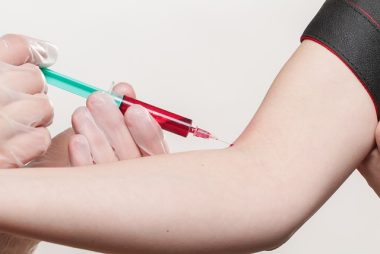How Mothers Can Get Rid Of “Bad Blood” In The Body After Child Delivery
Bad blood after child delivery is known as Lochia, and it is the mix of blood, mucus, and uterine tissue discharged from a mother’s vagina after child delivery. It usually lasts for 4-6 weeks, and it serves as the body’s natural way of getting rid of residual blood, mucus, amniotic fluid, bacteria, microorganisms, and any leftover fetal membranes from the uterus after delivery.
Although bad blood is an essential and normal part of the postpartum healing process, there are ways you can get rid of it faster so that you can be free of it.
In this guide, the question” How mothers can get rid of bad blood in the body after child delivery” will be answered.
⇒Join us on Telegram for more Sure and Accurate football-winning tips every day...click here
The 3 Stages of Bad Blood (Lochia)
Three stages of bad blood go out from a mother’s body after delivery. They are:
- Lochia rubra: This is the first stage of lochia. In this stage, blood is dark or bright red, discharge is similar to monthly flow, and lasts for about 3 to 4 days. There might be mild cramping and blood clots.
- Lochia serosa: This is the second stage of lochia. Discharge is pinkish brown, thinner, and more watery than that of lochia rubra. It typically lasts for 4-12 days, with little to no clots and the flow is moderate.
- Lochia alba: Thisis the last stage of Lochia. There is little to no blood, discharge is yellowish white, flow is light and there are no clots. It typically lasts for 12 days to six weeks.
How Mothers Can Get Rid Of “Bad Blood” In The Body After Child Delivery
- Limit physical activity:It is important to relax and take as much rest as possible during the first few weeks after child delivery. As exciting as it might sound to be back on your feet and return to your daily routine, excessive physical activity or strenuous exercises can increase blood flow to the pelvic area and worsen Lochia.
- Use sanitary pads:To effectively manage Lochia, sanitary pads are the best option. To avoid infection, change your sanitary pad every few hours. Tampons are not advisable because they can introduce bacteria into the vagina and increase the risk of infection.
- Practice good hygiene:Hygiene is any practice that promotes health. It is essential to keep the vaginal area clean and dry as much as possible to prevent infection. Warm water, sanitary pads, and clean towels can be used to achieve this. Soaps and any other product irritable to the delicate skin of the vaginal area should not be used. Wear clean clothes and use body spray or deodorant for the upper part of your body.
- Avoid sexual activity: After child delivery, it is best to avoid any sexual activity until after six weeks or until the “bad blood” discharge stops completely. During sexual activity, there is a high risk of introducing bacteria into the vaginal area, which can lead to an infection. When it’s okay to have sex, make use of contraception because it is still possible to get pregnant even if your menstrual period hasn’t returned.
- Stay hydrated:Drinking plenty of water can help flush out the urinary tract, reduce the concentration of Lochia, and help with your general well-being.
- Wear underwear and pants you don’t mind ruining: Just like menstrual flow, Lochia may ruin your clothes, so it is advisable to wear clothes you don’t mind discarding if the damage is maximal.
- Healthy Feeding:Usually, a lot of blood is lost during delivery, which leads to iron deficiency. Iron is essential in maintaining protein in the blood cells, so eating iron-rich food during Lochia is essential. Foods rich in Vitamin C are also needed because they are an excellent supplement for iron intake and help the body absorb iron. Eating healthily can speed up the healing process and reduce the duration of Lochia. This can be achieved by eating meals rich in protein, carbohydrates, iron, minerals, and other essential nutrients. Effective foods and ingredients during lochia discharge include black beans, ginger, red dates, leafy greens, lentils, etc.
- Having a caregiver massage your uterus:This can prompt your uterus to contract more rapidly and foster healing.
- Breastfeeding: The more your baby breastfeeds, the heavier and redder the bad blood will be. This is because breastfeeding helps your womb contract.
- Pee as often as possible:You should pee as often as possible, even if you don’t have the urge to go. After child delivery, your body undergoes several changes, which may cause your bladder to be less sensitive than usual. Hence, you might not need to urinate even when your bladder is full. Although a consistently full bladder may cause urinary problems, it also makes it harder for the uterus to contract, thereby increasing the risk of excessive bleeding and discharge.
Worrisome signs of “Bad Blood” Lochia
Lochia does not typically cause complications and should taper off on its own until it stops completely. However, there are signs you should report to the doctor as soon as you notice them. Below are some of these signs.
- Excessive cramping
- Clammy skin
- Foul-smelling odor (usually fishy)
- Excessive discharge (if your sanitary pad gets full within or in less than an hour)
- Excessive clotting
- Flu-like symptoms
- Swelling around the vaginal area
- Dizziness and wooziness
- Blurred vision
- Greenish vaginal discharge
- Rapid heartbeat
- Nausea
- Weakness
Conclusion
Bad blood (Lochia) in mothers after child delivery is normal, but still, it is essential to take steps to manage it and prevent the risk of infection. Limited physical activity, personal hygiene, regular use of sanitary pads, staying hydrated, healthy feeding, and abstinence from sexual activity can all help to reduce the duration and severity of Lochia. Consult with a healthcare provider for any concerns about Lochia or postpartum recovery.






